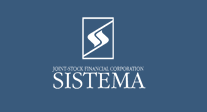Trai may recommend one-time fee for extra 2G
NEW DELHI: Telecom regulator Trai may recommend a one-time fee ranging from Rs 50.98 crore to a maximum of Rs 707.28 crore for every unit of second generation (2G) airwaves that incumbent GSM-based mobile phone companies have beyond the 6.4 MHz limit.The regulator may recommend that 2G airwaves in Uttar Pradesh (East) be priced the highest at Rs 707.28 crore as this region holds the maximum potential for future growth, while spectrum in Jammu and Kashmir be charged the least, according to a draft report, reviewed by ET.
Calculations by ET reveal that if an operator were to have one unit of airwaves beyond the 6.2 MHz mark across the country, it must shell out Rs 8380.55 crore, as per the Trai draft report.
The move will impact Airtel, Vodafone Essar, Idea Cellular, Loop (in Mumbai), Reliance Communications, and state-run telcos BSNL and MTNL. The government may also apply this one time fee for additional airwaves allocation for new entrants and dual tech companies.
Currently, these companies have been given only 4.4 MHz of start up GSM airwaves in most circles. If Trai’s draft pricing formula were to be considered, telcos such as Tatas and RCOM may have to pay about Rs 15,000 crore each for pan-India airwaves to take their total holdings to the 6.2 MHz. These companies have been vigorously arguing that that mobile permits entitle them to a minimum of 6.2 MHz of spectrum and only allocations beyond this amount can be linked to a market linked pricing mechanism.
Last week, telecoms minister Kapil Sibal had said that the country will charge mobile operators for additional spectrum at market-determined prices as specified by Trai. Sibal was appointed in November to clean up the sector and bring about reforms after former telecoms minister A Raja resigned facing allegations of selling airwaves for cheap, causing a loss of Rs 1.76 lakh crore to the exchequer according to the national auditor.
Last year, Trai had proposed that GSM telecom companies pay for 2G airwaves beyond the 6.2 MHz limit in every region at rates discovered during the third-generation spectrum auctions. However, due to stiff opposition from the GSM service providers, the regulator said it would revisit the issue.
Under the new pricing methodology, since incumbent GSM operators largely have airwaves beyond the 6.2 MHz mark in the metros and category A circles, their outgo is set to be lower. This is because the regulator is of the view that incremental 2G spectrum is less valuable in the metros , more valuable in category A regions and most valuable in category B areas. In parts designated as Category C regions, the regulator in its draft report said that the incremental 2G spectrum beyond the 6.2 MHz would be about 2.4 times the cost of 3G airwaves.
While a mobile permit allows a maximum of 6.2 MHz of airwaves per circle, GSM operators cite subsequent policy changes that entitle them up to 15 MHz or units of airwaves in each region, and add that the legality of this policy change has been upheld multiple times by the governments and the courts. This is hotly disputed by CDMA based and dual technology companies such as Reliance Communications and Tata Teleservices who content that a mobile permit entitles an operator a maximum of 6.2 MHz of airwaves per region.
India’s national auditor, in its report, submitted in Parliament in November 2010, said loss to the exchequer due to allocation of airwaves beyond the contracted amount to nine GSM players – Aircel, Bharti, BPL (Mumbai), BSNL, Idea, MTNL, Reliance, Spice (Punjab) and Vodafone is Rs 2,561 crore, ‘based on the amount charged from CDMA operators for grant of GSM spectrum in 2007’. The Comptroller and Auditor General of India in its report also added that going by Trai’s proposals, the loss to the exchequer was Rs 36,993 crore.





